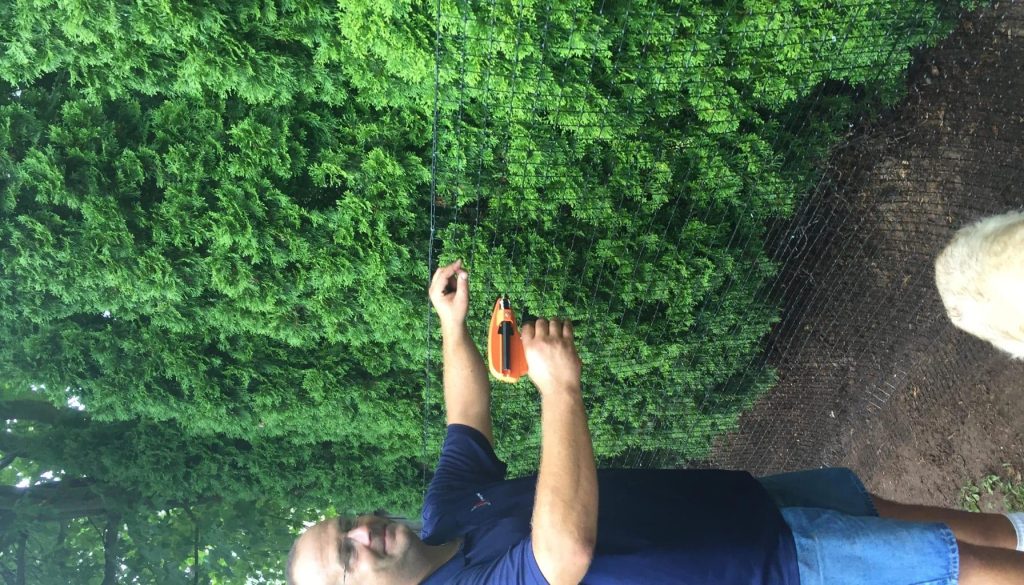Coyotes are becoming an increasing concern for pet owners across North America. At Petplaygrounds Non-Electric Dog Fence, we understand the importance of protecting your furry friends from these cunning predators.
Our comprehensive guide to coyote protection will equip you with practical strategies to safeguard your yard and pets. From understanding coyote behavior to implementing effective deterrent methods, we’ll help you create a safer environment for your beloved animals.
Why Coyotes Pose a Growing Threat to Pets
The Rise of Urban Coyotes
Coyotes now thrive in urban and suburban areas across North America. This trend stems from habitat loss and the animals’ impressive adaptability. The Urban Coyote Research Project in Chicago found that coyotes benefit from the urban landscape. This behavioral shift amplifies the risk of pet encounters.
Residential Coyote Encounters: Timing and Motivations
Coyotes typically infiltrate residential zones during dawn, dusk, and nighttime. However, they may appear at any hour if food sources abound. Common attractants include:
- Unsecured trash bins
- Outdoor pet food
- Fallen fruit
- Small animals (e.g., rodents drawn to bird feeders)
Research shows coyotes are generally more carnivorous in temperate forests than other ecoregions, primarily due to greater ungulate consumption. This adaptability renders residential areas particularly appealing to them.
Real Dangers Coyotes Present to Pets
Small dogs and outdoor cats face the highest risk of coyote attacks. However, larger breeds aren’t immune, as coyotes sometimes target larger animals. The threat extends beyond direct attacks:
- Disease transmission: Coyotes can carry rabies and Echinococcus granulosus tapeworms (health risks to pets and humans).
- Territorial aggression: During the breeding season (April through August), coyotes exhibit increased protectiveness and potential aggression.
- Luring behavior: Coyotes have attempted to lure dogs away from their owners, escalating attack risks.
Identifying Coyote Presence in Your Area
To protect your pets effectively, you must recognize signs of coyote activity in your neighborhood:
- Tracks or scat in your yard or nearby areas
- Howling or yipping sounds (especially at night)
- Sightings reported by neighbors or local wildlife agencies
The Importance of a Multi-Faceted Approach
A comprehensive protect-and-deterrent strategy involves multiple methods alongside secure fencing to keep pets safe from coyotes. Pet Playgrounds Non-Electric Dog Fence offers a robust solution with its four-tiered security system, featuring steel cable rails and high-strength poly mesh. This system provides formidable protection against coyote threats while maintaining aesthetic appeal.
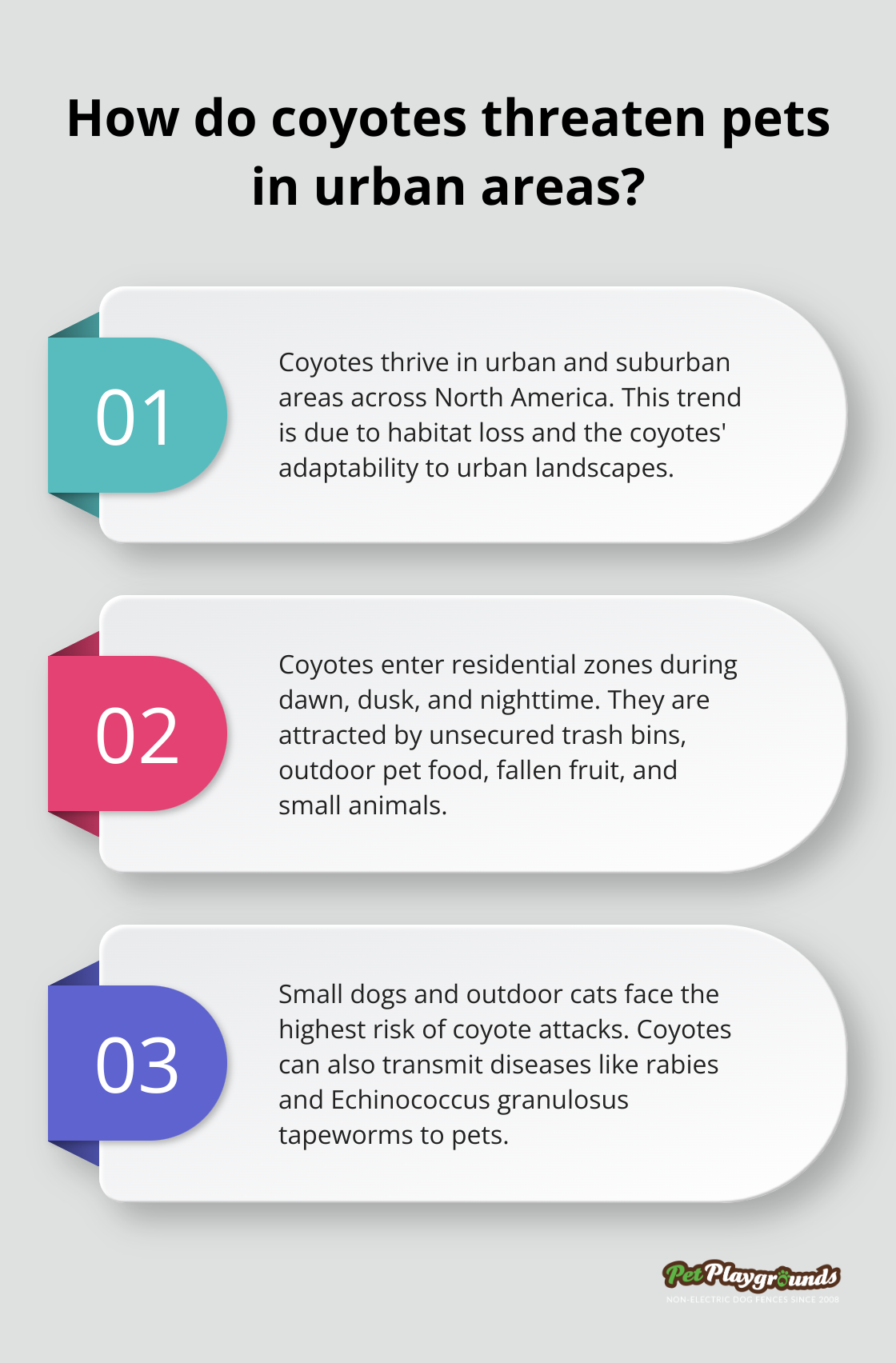
As we move forward, we’ll explore effective coyote deterrent methods to fortify your property and safeguard your beloved pets.
How to Coyote-Proof Your Property
Protecting your pets from coyotes requires multiple strategies. Pet Playgrounds Non-Electric Dog Fence recommends several methods to create an unwelcoming environment for these opportunistic predators.
Eliminate Food Sources
The first step to deter coyotes involves removing all potential food sources from your property. Secure your trash bins with tight-fitting lids or store them in a garage until collection day. Clean up fallen fruit from trees and remove any outdoor pet food. The Humane Society advises avoiding feeding pets outside to reduce coyote attractants.
Install Motion-Activated Deterrents
Motion-activated lights and sprinklers can startle coyotes and discourage them from entering your yard. These devices are particularly effective during nighttime (when coyotes are most active). Colorado Parks and Wildlife recommends using motion lighting, strobe lights, sirens, or odor deterrents alongside other methods for maximum effectiveness.
Create Physical Barriers
A robust fencing system is key in keeping coyotes out of your yard. The USDA recommends fences at least 6 feet high with an additional underground barrier 12 inches deep to prevent digging. Pet Playgrounds Non-Electric Dog Fence system incorporates a four-tiered security approach, including a steel cable rail system and high-strength poly mesh (infused with Bitter Pro to deter chewing).
Maintain Your Landscape
Trim dense bushes and remove brush piles to eliminate potential hiding spots for coyotes. Keep your grass short and maintain clear sight lines across your property. This deters coyotes and allows you to spot potential threats more easily.
Use Sound Deterrents
While not a permanent solution, sound deterrents can offer short-term effectiveness. Air horns, whistles, or banging pots and pans can scare coyotes off. However, wildlife experts warn that coyotes may acclimate to these sounds over time, so varying your approach is essential.
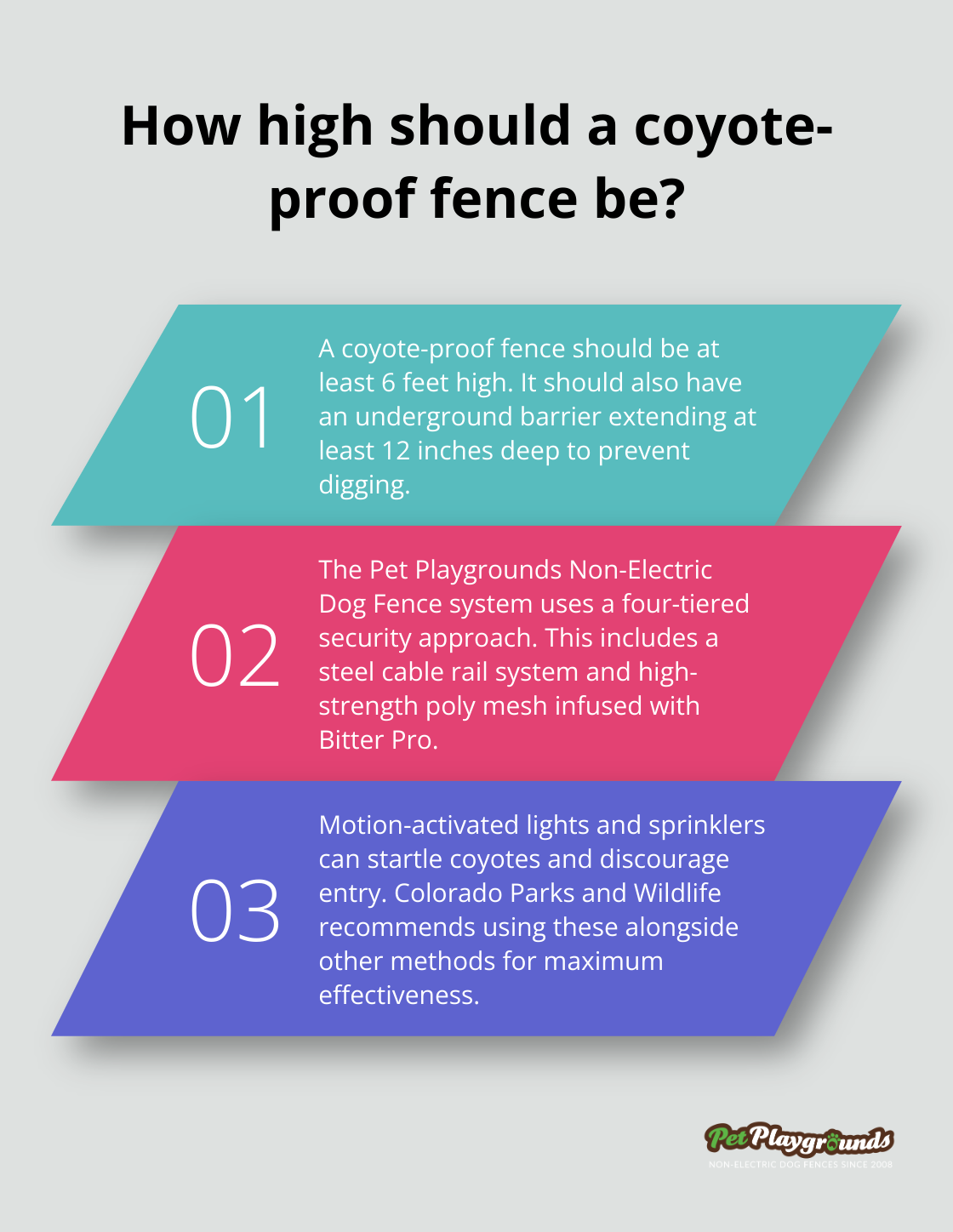
Implementing these strategies will reduce the likelihood of coyote encounters on your property. Consistency is key to wildlife deterrence. Regular maintenance of these measures will help ensure long-term protection for your pets.
Now that we’ve covered how to coyote-proof your property let’s explore how to create a coyote-resistant landscape that not only deters these predators but also enhances the beauty of your outdoor space.
Landscape Design for Coyote Prevention
Open Sight Lines
Coyotes prefer areas with dense cover. To deter them, please maintain open sightlines across your property. Mow your lawn regularly and keep it short, especially around the perimeter of your yard. Remove or thin out thick bushes and shrubs, particularly those near your home or where pets frequent.
Smart Plant Selection
Choose plants that don’t attract small prey animals, which can lure coyotes. Avoid berry-producing shrubs and fruit trees that might draw in rodents or birds. Instead, opt for plants known to repel wildlife. Incorporate fragrant plants like lavender, marigolds, and mint into your landscape. These aromatic options can deter coyotes due to their keen sense of smell.
Barrier Plantings
While maintaining open sight lines, strategically place barrier plants to create natural deterrents. Use thorny shrubs like barberry or firethorn along property lines or potential entry points. These plants provide dense foliage and sharp thorns, making it uncomfortable for coyotes to navigate.
Tree Maintenance
Trim low-hanging branches on trees, especially those near fences or structures. This prevents coyotes from using them to jump over barriers. Coyotes can jump up to 6 feet high, eliminating potential launching points (such as low branches or nearby structures).
Landscape Lighting
You can install strategic lighting in your yard to deter nocturnal coyote activity. Motion-activated lights can startle and disorient coyotes, encouraging them to flee. Solar-powered options offer energy-efficient illumination without increasing electricity costs.
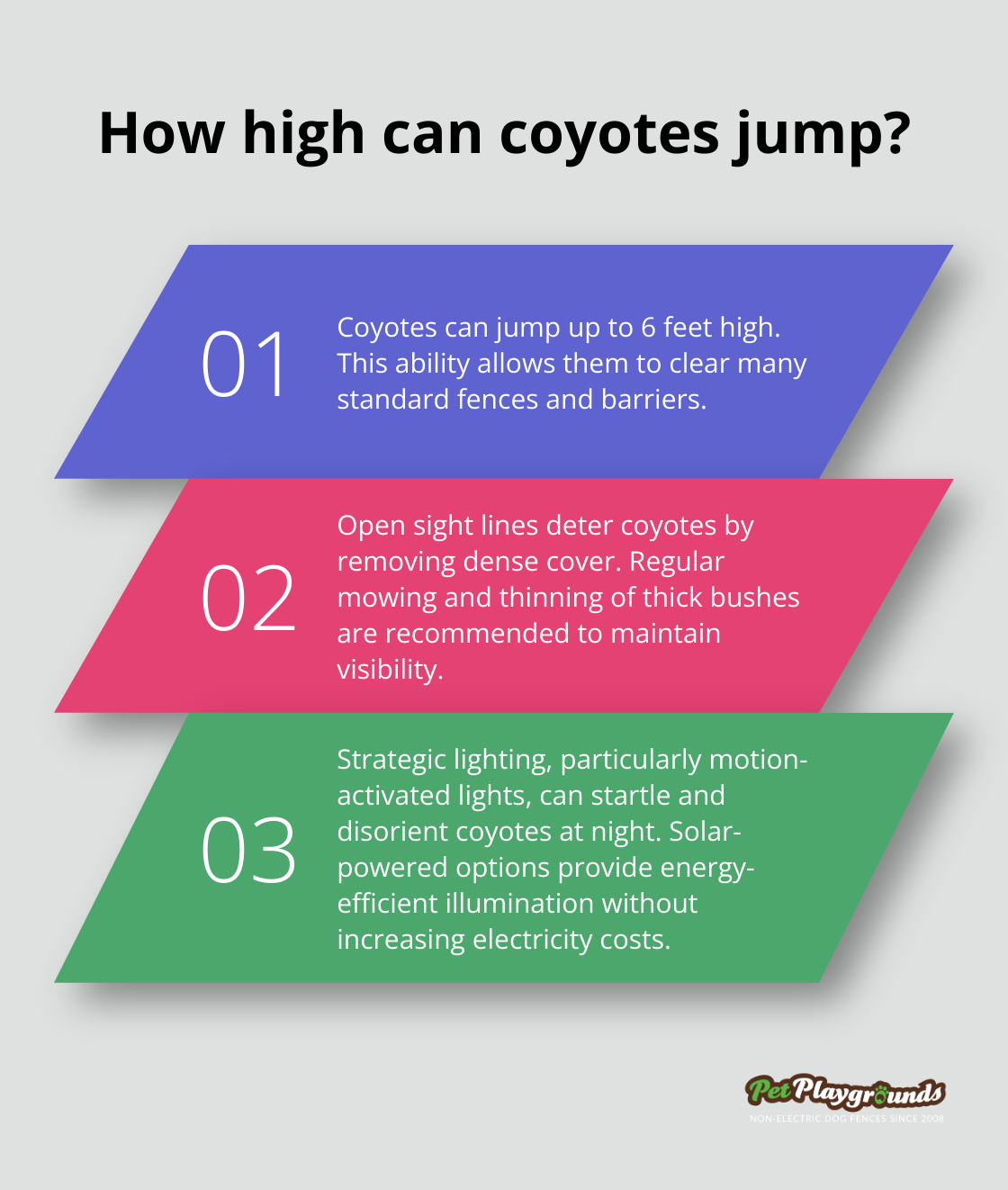
In addition to these landscape design strategies, could you consider installing a coyote fence for added protection? These specially designed barriers can effectively keep coyotes and other predators out of your property, providing your pets an extra layer of security.
Final Thoughts
Coyote protection requires a multi-faceted approach that combines thoughtful landscaping, effective deterrents, and robust physical barriers. These strategies create a safer environment for pets while discouraging coyote intrusions. Community education and cooperation play a vital role in managing wildlife interactions, so share your knowledge with neighbors to implement consistent deterrent practices throughout your area.
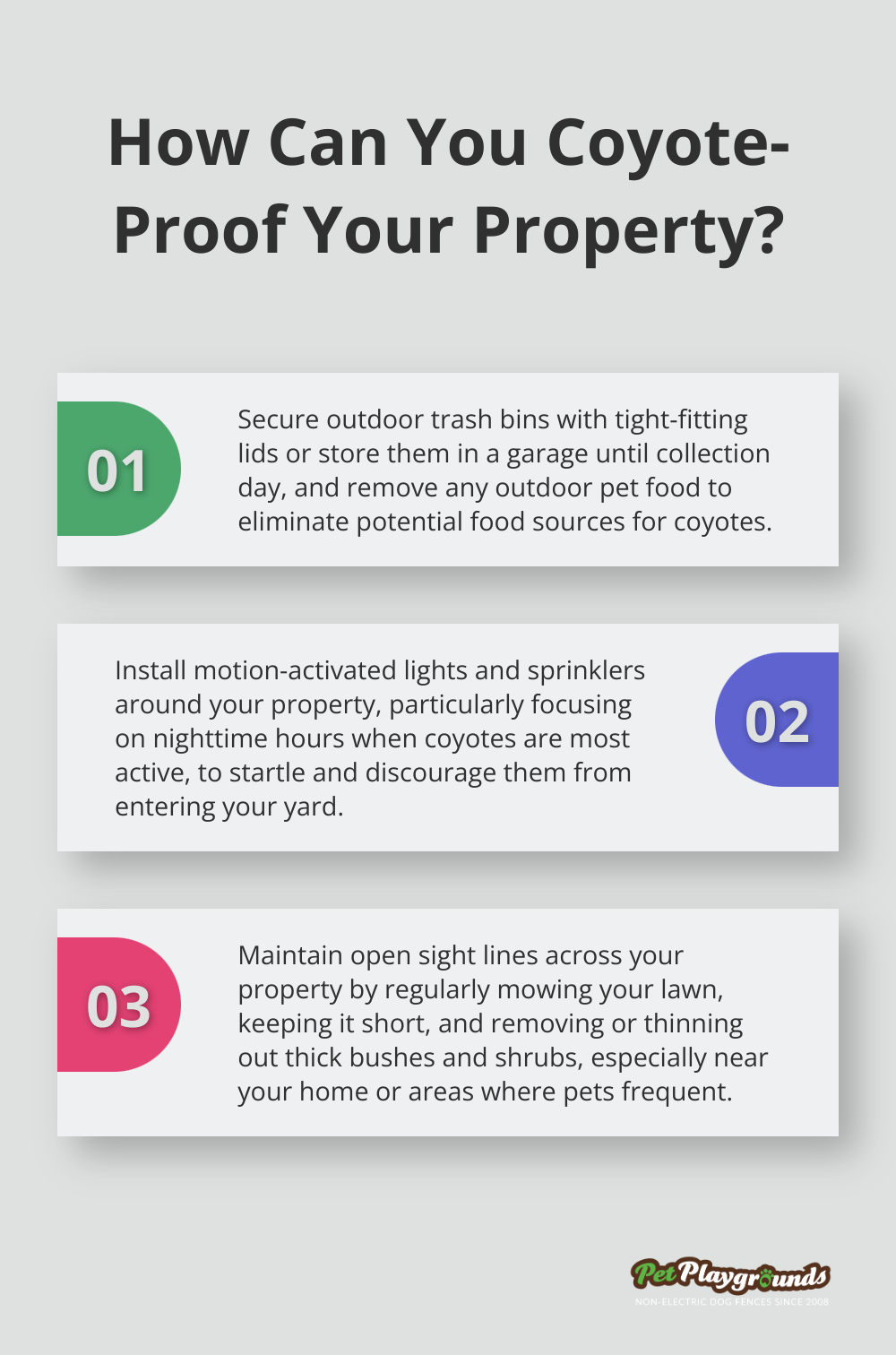
The long-term benefits of coyote-proofing your property extend beyond immediate pet safety. You’ll gain peace of mind knowing your outdoor spaces are secure, allowing your pets to enjoy fresh air and exercise without constant supervision. These measures often enhance your property’s overall appearance and value, making them a worthwhile investment.
For those seeking an extra layer of security, Pet Playgrounds Non-Electric Dog Fence offers a premium solution that complements the strategies discussed. Our coyote-resistant fencing system provides multiple levels of protection, including a dig guard and anti-climb design. Investing in your pet’s safety adapts seamlessly to your landscape and fosters harmonious coexistence with local wildlife.



